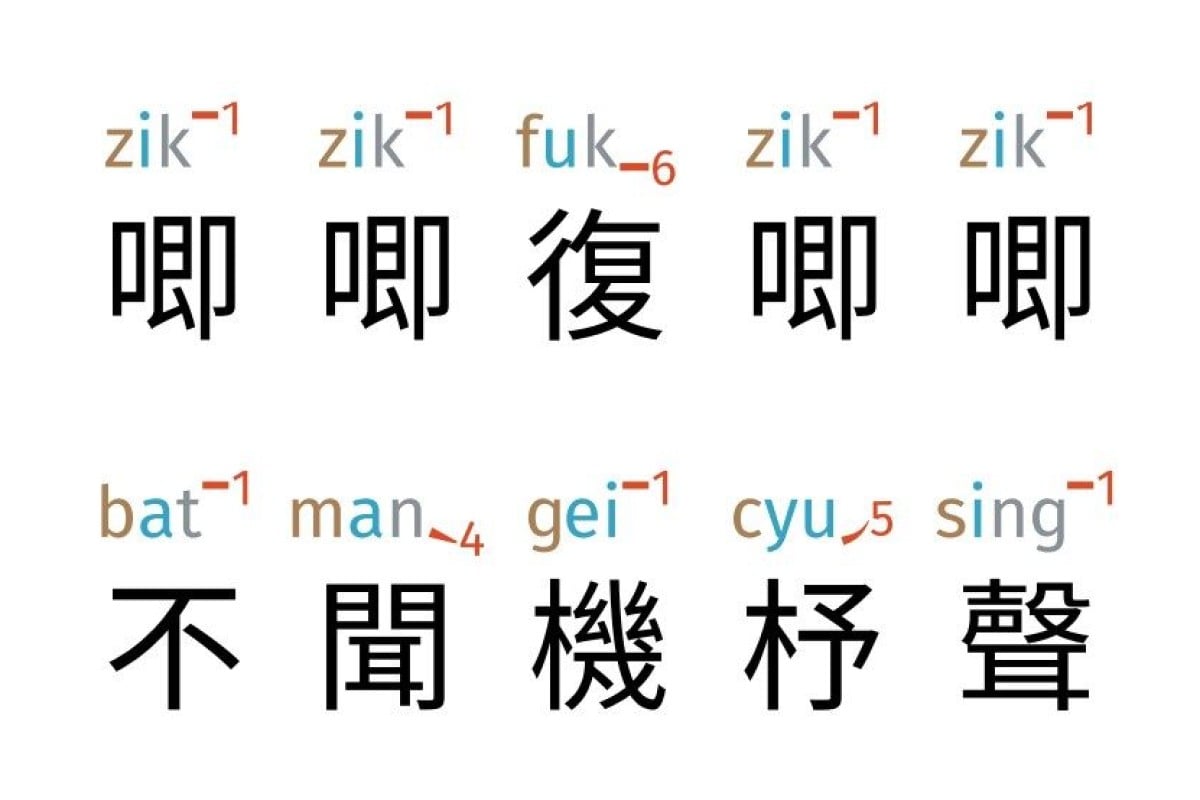
Digital tool adds Cantonese pronunciation to characters, making them easier to read
Visual Fonts automatically changes the Jyutping to match the context of the sentence, helping non-native learners pick up the language.
 Visual Fonts uses colours and tone markings to make it easier for learners to read characters in Cantonese. Photo: Visual Fonts
Visual Fonts uses colours and tone markings to make it easier for learners to read characters in Cantonese. Photo: Visual FontsEvery week, Talking Points gives you a worksheet to practise your reading comprehension with exercises about the story we’ve written.
Hongkonger Jon Chui had an exciting idea in 2007. He wanted to make the first set of Cantonese fonts that show romanised pronunciations. He believed it would help more people learn Cantonese.
Jyutping is a Cantonese romanisation system that uses letters and numbers to show sounds and tones. Chui’s tool, Visual Fonts, adds Jyutping to the Chinese characters on the screen of a computer, phone or other device. This technology was released last month.
It also helps with a big challenge in learning Cantonese: the pronunciation of a character changes depending on the words around it.
Visual Fonts can correct the Jyutping in real time. It correctly matches the character to its pronunciation more than 99.5 per cent of the time.
“It’s exhaustive. One character can have multiple pronunciations,” said Chui, 45.
The Hongkonger started this huge project because he wanted to create better resources to help non-native learners of Cantonese. Since 2017, he has been working full-time to bring his idea to life.
“Hong Kong remains a cosmopolitan city, and making the language accessible to non-native Chinese [speakers] is important,” Chui said, adding that his tool could also be useful for families who have left the city.
“With our recent diaspora, some parents want to pass on some cultural identity but find it hard to do so, and some children, in time, wish to find where they came from.”
Immigrants from Hong Kong make books and tools to teach Cantonese to their kids
A tool that makes Cantonese easier to learn
Many people feel Cantonese is too difficult to learn. Unlike Mandarin and many other languages, Cantonese’s written form is often different to how it is spoken.
The language is also complicated because it uses six to nine tones. The meaning of a word can change completely based on the tone. That is why Chui’s font is so helpful for non-native learners.
Visual Fonts can give Cantonese pronunciation guidance for people to read Chinese characters on their screens. They do not even need an internet connection. The system uses colours and lines to show what should be emphasised and pronounced.
In daily life, native speakers use about 3,000 characters. But Visual Fonts has 29,138 characters, so it covers everything that can be pronounced in Cantonese.
It also offers English translations, common idioms, grammar lessons and other tools to help with teaching the language.
“[My font] really shouldn’t have worked. It’s a complete miracle made possible by the support of many people,” Chui said.
Connect with language
Chui hopes his project can change how Cantonese is taught.
According to Chui, many Hongkongers do not see the importance of Jyutping because they learn Cantonese’s tones and pronunciation from their families.
“Many Hongkongers argue that Jyutping is unnecessary,” he said. “This ... highlights a lack of awareness or empathy toward the challenges faced by Cantonese learners.”
For now, the tool’s main group of users are adult learners who don’t know the language well but come from Cantonese-speaking families. Chui’s fonts could also be useful for Hong Kong’s local school students from ethnic minority communities.
However, Chui emphasised that his tool was useful for native speakers, too. For example, students can use it to help them read old Chinese texts that have challenging vocabulary.
-
Reflect: What is tough about learning a new language?
To test your understanding of this story, download our printable worksheet or answer the questions in the quiz below.
cosmopolitan 國際化
having people from different countries
diaspora 脈絡
people who have moved away from their country
exhaustive 詳盡
very careful or complete
non-native learners 非母語學習者
someone who has not spoken this language from the time they first learned to talk
romanised 羅馬拼音化
to put text into the Roman alphabet
